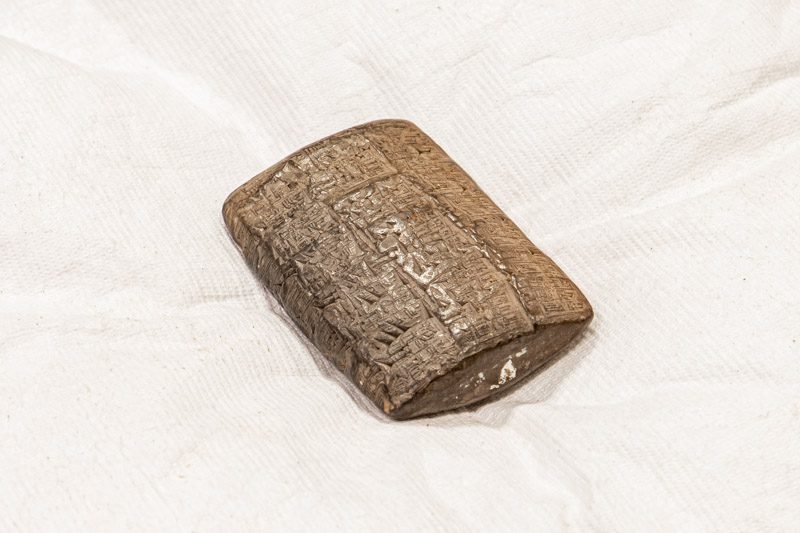Winter Break Hours and Services
Shields Library is closed through January 4, 2026. Digitization and interlibrary loan requests will be fulfilled after the library reopens on January 5.
Frequently Asked Questions
Visiting in Person
The Special Collections Department is located on the first floor of Shields Library, to the left, as you enter the building.

No appointments are necessary, however, most collections are stored offsite and need to be retrieved for your research visit. To begin the request process, researchers should request boxes via the Aeon request system at least seven business days before visiting. Please check your Aeon account to confirm that the item is ready for your use before visiting our Reading Room. Our Reading Room hours are listed here.
The Special Collections staff will guide your through the steps needed to access the UC Davis manuscript and archives collections either on your first visit or via e-mail at speccoll@ucdavis.edu.
The Society of American Archivists has published a guide for the public to learn more about archives, Using Archives: An Effective Guide to Research by Laura Schmidt. This online publication outlines the functions and procedures of archives, and is designed both for first-time archives users and scholars who have already conducted research in archives.
Ink from a pen can permanently damage a book or manuscript while pencil marks are reversible. We have extra pencils if you need to borrow one. Also, you may use your laptop to take notes or take pictures with a personal camera.
Our Collections
We are open to the public. Anyone who registers as a patron and adheres to our Reading Room policies can use our collections. For more information, please see our Access and Policies page.
It is standard operating procedures for Special Collections to ask researchers to register due to the rarity and scarcity of the materials. Registration provides information about how to handle fragile materials and asks you to sign an agreement of the Reading Room rules. Our staff tries to assist you with unique materials, and if we become aware of an item that might be of interest to you later then we use this information for reference purposes to get back to you.
You will need to submit our “Permission to Publish” form. For more information visit our Request Duplication page.
You can find records describing our collections by searching the Advanced tab of the Library Search and limiting the location to Shields Special Collections. Descriptions of our manuscript collections may be found on our web manuscript collection guide.
Please visit the Find and Request Materials page.
A book doesn’t have to be “old” to be important. Books may be selected for our collections because they are first or limited editions, autographed, or important for any number of reasons. We sometimes acquire new books because they document a subject we collect in depth.
A clay tablet from Sumeria, circa 1974 B.C. The cuneiform inscription is an administrative text written during the Third Dynasty of Ur at Umma, which was at the center of a large agricultural district in southern Mesopotamia. The text orders the hiring of persons to perform agricultural work on the fields belonging to the temple of Shara, the chief god of Umma.

Please visit the Find and Request Materials page.
Please cite:
[Identification of item], [Collection Name], [Collection Number], Archives and Special Collections, UC Davis Library.
Donations, Appraisals and Preservation
Please contact Special Collections to describe the materials that you wish to offer to the department via email at speccoll@ucdavis.edu.
Additional information can be found on the Guidelines for Gifts page.
Special Collections staff cannot provide appraisals or estimates of value.
If your item is a book or manuscript, you can consult the web site of the Antiquarian Booksellers Association of America. The Your Old Books publication by the Rare Books and Manuscript Section of the Association of College and Research Libraries addresses some frequently asked questions about rare and older books and their values.
Please see the website of the Library of Congress Preservation Department.
Definitions
A finding aid is a guide to a manuscript collection. It describes the materials in a collection and also contains a scope and content note of the collection, biographical information about the creator or collector, and explains how the collection is arranged.
The OAC, a component of the UC’s California Digital Library is a website that provides access to detailed descriptions of primary source collections maintained by libraries, historical societies, and museums, throughout California – including collections maintained by the University of California (UC) campuses. Our findings aids are available here on the OAC.
- A handwritten document.
- An unpublished document.
- An author’s draft of a book, article, or other work submitted for publication.
A manuscript collection is a collection of personal or family papers. Although manuscript literally means handwritten, “manuscript collection” is often used to include collections of mixed media in which unpublished materials predominate. They may also include typescripts, photographs, diaries, scrapbooks, news clippings, and printed works.
Material that contains firsthand accounts of events and that was created contemporaneous to those events or later recalled by an eyewitness.
- An individual responsible for appraising, acquiring, arranging, describing, preserving, and providing access to records of enduring value, according to the principles of provenance, original order, and collective control to protect the materials authenticity and context.
- An individual with responsibility for management and oversight of an archival repository or of records of enduring value.
A scope and content note is a narrative statement summarizing the characteristics of the described materials, the functions and activities that produced them, and the types of information contained therein.
* Definition from A Glossary of Archival and Records Terminology by Richard Pearce-Moses.